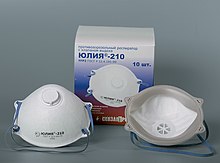Video conferencing/Oral exam





Is learning resources about oral examination under public-health constraints and Requirements. We Consider oral examination with to teachers and one student. One teacher cannot he exposed to group of people. This learning resource was created during the COVID-19 pandemics. Learning resource search teaches and admin is in educational units to perform oral assessments with the consideration of epidemiological requirements and constraints. In this case, a teacher should not come into contact with a group of people during several examinations. This learning resource was created during the COVID-19 pandemic as an example for the Transformation of Workflows. The learning resource addresses lecturers, teachers and organisers in educational units who want to conduct oral examinations taking into account the epidemiological requirements and general conditions.
Legal aspects
[edit | edit source]Depending on the design of the examination regulations, it must be clarified whether and how an oral examination can be conducted using a video conference system. The following basic conditions were taken into account. However, this can be regulated differently in the respective examination regulations. This learning module deals with technical feasibility and the epidemiological protection of the participants. To conduct an examination in the form described below, the university examination board or examination offices should be contacted.
The following general conditions were taken into account:
- All examiners and the examinee are located in one building,
- An examiner (P1) (here the risk patient) is located in a separate room/office with access to a video conference system
- Examinee/student/pupil (S) and second examiner or, if applicable, assessor (P2) are together in one examination room.
Epidemiological conditions
[edit | edit source]- The examiner (P1) can enter the examination room with an FFP2/3 mask in case of technical failure and finish the examination in the room or
- The test is interrupted by (P1/P2) to solve the technical problems and the test time is appended Similar procedure to an exam where an examiner has to leave the room due to unforeseen circumstances (e.g. to take medication)
- The examiners (P1/P2) cancel the exam and allow the student to repeat the exam,
Examiner as High-Risk Patient
[edit | edit source]Assume that the examiner is a high-risk patient, that should avoid contact to many students in a series of oral assessments. The following general conditions were taken into account:
- All examiners and the examinee are located in one building,
- An examiner (P1) (here the risk patient) is located in a separate room/office with access to a video conference system
- Examinee/student/pupil (S) and second examiner or, if applicable, assessor (P2) are together in one examination room.
- The examinee agrees in writing to the examination conditions.
- The examinee is informed about the interaction possibilities with the examiners (Where does the examinee write, where does the examinee see what the examiners write or sketch, if applicable.
Student risk patient
[edit | edit source]Now we assume that the student is a high-risk patient. The following general conditions were taken into account:
- All examiners and the examinee are located in one building,
- Student (S) (here the risk patient) is located in a separate room/office with access to a video conference system,
- Both examiners (P1),(P2) or assessor (P2) are together in one examination room.
- The examinee is led into the examination room taking into account the distance and is visible in the examination room via cameras,
- The examinee is informed about the interaction possibilities with the examiners (Where does the examinee write, where does the examinee see what the examiners write or sketch, if applicable.
- The examinee is informed what the plan B is in case of increasing technology (alternative video conference system or cancellation of the exam, which is not evaluated as an exam attempt, ...)
- The examinee agrees in writing to the examination conditions before the beginning of the examination.
- If, for medical reasons, students cannot travel to the oral examination by public transport, the examination deadlines may have to be extended or the examination modalities adjusted to compensate for any disadvantages.
Setup and Technology
[edit | edit source]
This course unit uses the Open Community Approach. Therefore OpenSource technology is used whenever possible. The technology should be as simple and cost-effective as possible and use OpenSource.
Digital transmission of handwritten notes from students to teacher
[edit | edit source]During the examination, students may have to make handwritten notes during the oral examination. These can be recorded with the webcam and transmitted via video conference to the teacher (e.g. next room due to epidemiological constraints or to some performing the oral assessment from a remote location). The following equiment was used to testing:
- Graphics tablet with pen
- Raspberry Pi with attached graphics tablet for transmission of notes from teacher to student.
- Raspberry Pi with OpenSource Operating System Raspian) and the following installed Webcam driver for transmission of handwritings via Webcam)
sudo apt-get install fswebcam
- Webcam is used for transmission of handwritten notes from student to teacher via OpenSource BigBlueButton Video Conferencing System.
- The following room shows the setup in the room for oral exams. In this room there are two people,
- the student (S) and
- the second teacher.
Browser View of BBB Video Conference System
[edit | edit source]The following screenshot shows the overall view of the video conferencing system BigBlueButton with a removed student view of the webcam and a removed second examiner view (also webcam). The webcams view were located at the top of the screen and can also be displayed in BBB in full screen mode for students or examiners e.g. for better readability of handwritings of student in the browser:
Acknowledgement
[edit | edit source]Many thanks to
- Anna Fath,
- Svenja Hundemer,
- Micha Ballmann (Setup-BBB) and
- Jörg Rapp
for the testing and support for testing and setup of the technical infrastructure for the oral examination with special epidemiological restrictions (e.g. for teachers as patients at risk during COVID-19 pandemics).
